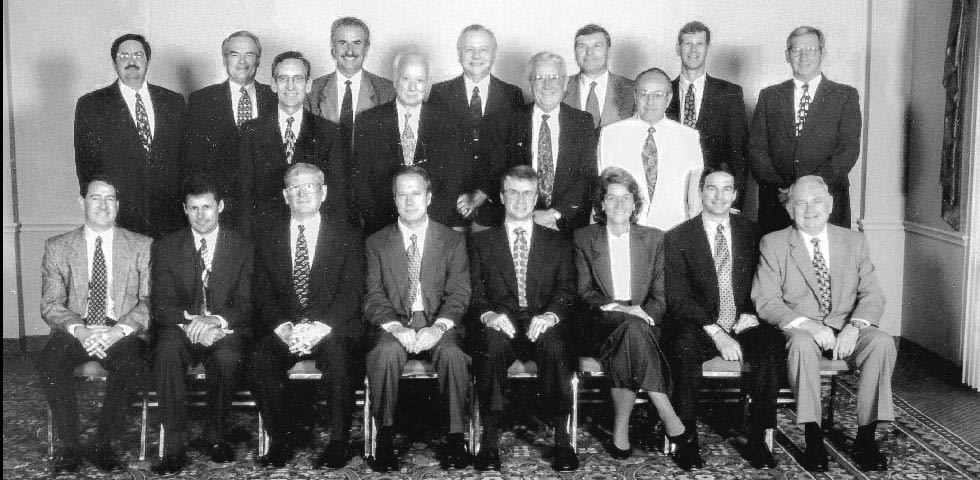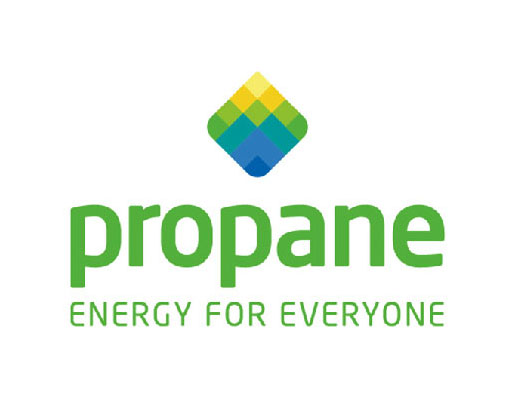
No matter the organization, no matter the leadership, no matter the industry — if success is to be achieved, adaptability must be a core tenet. The Propane Education and Research Council, which celebrates its 25th anniversary this year, is a prime example of this.
On Oct. 11, 1996, the Propane Education and Research Act was signed into law by the United States Congress with the goal to “authorize and facilitate a program to enhance safety, training, research and development, and safety education in the propane gas industry for the benefit of propane consumers and the public, and for other purposes.”
In the year that followed, industry leaders from across the country came together to form a council and determine a mission for the new organization. The original council consisted of 21 members, with nine members representing retail marketers, nine members representing producers, and three public members.
According to the act, other than the public members, the rest of the council would be full-time owners or employees of businesses in the industry or representatives of agricultural cooperatives. Council members served a term of three years and could not serve more than two consecutive terms.
To fund this new organization, the council was tasked with setting the initial assessment at no greater than one tenth of 1 cent per gallon of odorized propane sold. (The current assessment for the industry is five-tenths of 1 cent for every gallon sold.) The act also made note that the owner of the odorized propane at the time of odorization was responsible for paying the assessment based on the volume of propane sold.
Propane exported from the United States to another country was not subject to the assessment. In creating this funding mechanism, the original leaders shaped an organization in which all American propane companies, regardless of geographical area or end user, had a stake in the council’s success.
How It Started
While there were several notable industry names on the list of lobbyists that helped create PERC, including Dan Myers, Glenn Miller and Daryl McClendon, there is one person credited as “the father of PERC” and the original champion for the cause: Milford Therrell.
“Anytime you think about ‘who,’ you have to put Therrell at the top of the list for two reasons: It was his vision, of course, and he never wavered,” said Tucker Perkins, current president and CEO of PERC. “Whether you were on the industry side and you were someone he was trying to get to help him, or you were someone in Congress — he was the constant source of drive.”
Therrell, who also served as the president of the National Propane Gas Association, first proposed the idea as an industry check-off program. Together with Glenn Miller, of Millers Bottled Gas, they worked to engage lawmakers at the capitol on the importance of creating such a council for the industry.
Once the law was passed, the industry still had to vote to approve the formation of the council. After months of work, marketers and producers approved the referendum with a vote of 95.5% and 93.7%, respectively. Therrell was elected to be the council’s first chair and Miller elected vice chair. The founding councilmembers named Roy Willis president and CEO, who remained in the position until his successor, Perkins, took over in 2017.
In addition to the goals outlined in the act, the original mission of the council was also to be a marketing tool to ensure marketers had the correct messaging for prospective users of propane for proper use and handling of the fuel. Perkins said one of the major changes has been a shifting mindset in how much effort PERC would need to expend to assist marketers in their messaging. Some of this could be attributed to a changing demand for the fuel itself. “Then, propane was this relatively new fuel that had all of these versatile and powerful benefits, and no one dared challenge the environmental effects of it,” Perkins said.
While it’s obvious to anyone that the climate the industry faces now has changed, PERC’s purpose remains relatively the same. The difference is in how it’s communicated.
How It’s Going
Over the last 25 years, PERC has been responsible for the progression of numerous innovations and programs for the propane industry. One of them was the council’s choice to hire Perkins, previously CleanFuel USA’s president and chief operating officer, as chief business development officer.
As reported by BPN in a previous article, the council’s work over the three years following resulted in the creation of 40 different products and 122,000 units sold that consumed more than 280 million gallons of propane.
This R&D investment in the promotion of propane autogas continues — PERC and Cummins announced a partnership earlier this year that included a council investment of $12 million in funding aimed at commercializing a propane engine already developed by the manufacturer. Perkins said another benefit of partnering with such a notable name in manufacturing helps the industry gain recognition for more opportunities for growth. In the council’s 2020 annual report, it estimated that $2 billion of PERC’s investments in research and development have been returned to the propane industry.
PERC’s original goal of promoting safety in the industry continues to both be realized and evolve in the training programs the council offers to the industry. Perkins said that although the council’s propane learning center launched in 2019, the team is essentially in year two because of several of the challenges they had to work through with logistics and ease of use.
The content available in the learning center includes everything from driver safety to marketing language and customer communications. Courses are broken down into modules and are available in a mobile-friendly format to reach a wider audience. Employers can also choose which courses to assign or skip if the content is not applicable to any particular business or employee.
Webinars offering information and training on using the learning center itself are available, and employers can take advantage of new features, such as an electronic skills assessment, offline training and improved reporting options.
PERC also continues to be an industry resource for data and research about end users, propane use cases and potential growth for the fuel. Visitors to the website have a plethora of information at their fingertips, including market profiles, residential growth data, grain drying demand models, retail propane sales reports and more.
While the council has been a resource since its founding for data, training and safety information, broader economic trends, including the “electrify everything” movement that the industry currently faces, were the catalyst for the council to reassess the role it plays as a conduit communicating the benefits of propane to both the industry and its customers. In July 2021, PERC unveiled its new brand “Propane Energy for Everyone,” which highlights propane’s role in ensuring energy equity and reducing carbon emissions.
 The new brand, created by Elevation Advertising, was designed with equity in mind — the icon at the top of the logo was meant to display the many uses and user groups that turn to propane as a clean, affordable energy source, no matter the situation or environment.
The new brand, created by Elevation Advertising, was designed with equity in mind — the icon at the top of the logo was meant to display the many uses and user groups that turn to propane as a clean, affordable energy source, no matter the situation or environment.
According to Erin Hatcher, senior vice president, communications and marketing for PERC, the impetus for the rebrand came about through NPGA and PERC supporting and advocating environmental campaigns that included propane as a clean energy source. This included getting others outside the industry to see propane as a fuel source that epitomized the council’s message: Clean, affordable propane ensures equity on the path to zero emissions.
The focus on clean, American energy was part of the picture, Hatcher said, but did not fully translate what the council — and the industry — provides the general public. “It’s an opportunity for storytelling; that propane contributes to decarbonization — now, not just in the future with the use of renewable propane,” she continued. “One of the greatest examples of that has been the use of propane autogas in school buses.”
With the new brand, a mindset shift is crucial. “It’s the first time we’ve really talked to people about their feelings regarding propane from an environmental perspective — it’s always been about its power, its portability, etc.,” Perkins said. “And we’ve also decided to adapt our advertising on a regional basis. People in Southern California want to hear about propane differently from people in North Alabama.”
And the channels matter, he says. “It’s crazy, but AM radio still works in a lot of America. Cable TV still works,” Perkins continued. “The better we get at digital segmentation, though, the more successful our messaging will be.”
The current economic climate and an administration that is pushing electricity as America’s choice for an energy source created an environment in which a new, unified industry voice was not just a nice-to-have, but a have-to-have.
“There was no time to waste in demonstrating an entirely new vision of how to think, act and talk about propane,” Perkins said. “While I loved the old brand, it doesn’t resonate as much with the people we need to connect with today. We have to make the shift in how we interact with those people. And the new brand, hopefully, will lead people to think, act and inquire about propane.” Above all, the goal of the new brand is to set in action a seismic shift in the conversations around propane as an energy source. According to Perkins, the changes are as much for the customer as they are for helping the marketer inform. Ultimately, the new brand should serve as yet another resource PERC provides in a marketer’s toolkit — with the goal of telling the story of how propane has a firm foothold in a cleaner future as a safe and reliable fuel source. “Our No. 1 role is to be a research and education council. We will continue to be the engine for providing the data and resources our marketers need,” Hatcher said. “But next is awareness of propane and its attributes — and our role also includes providing the education and the tools necessary to accomplish broader awareness of what propane can do.”


